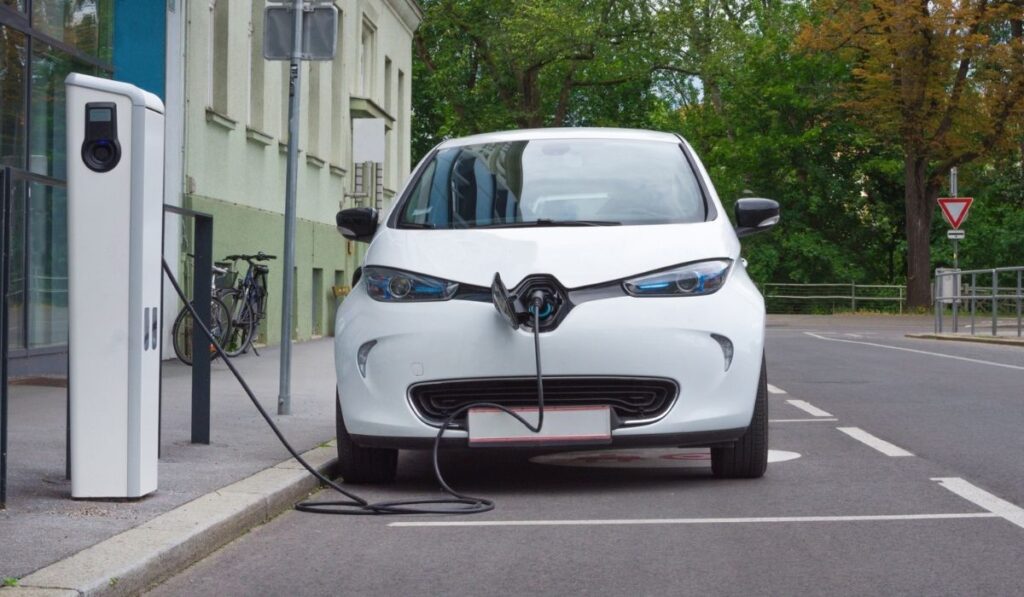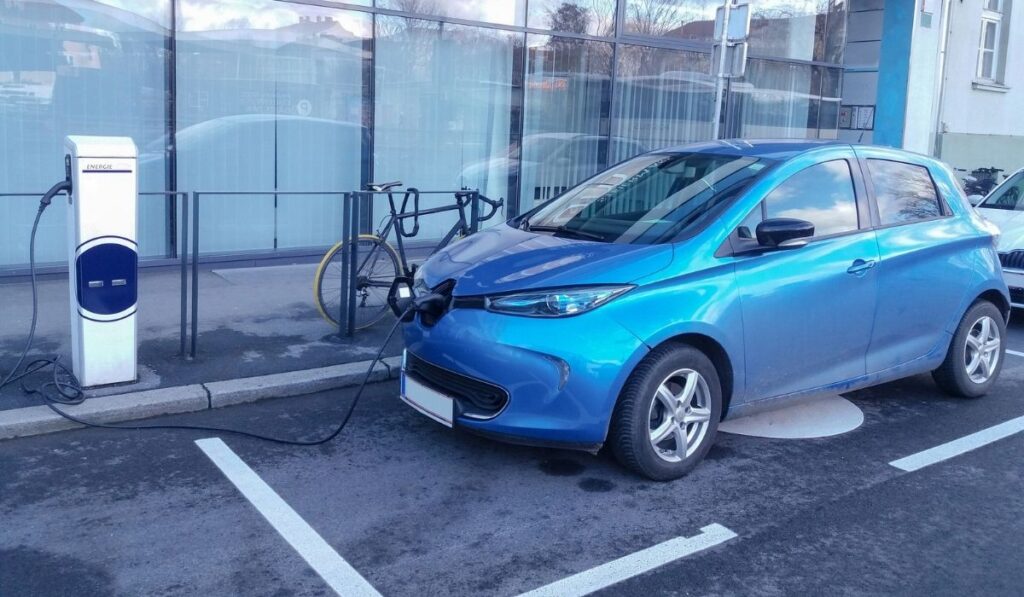One of the perks of owning an electric vehicle (EV) is that you don’t have to feel it at the gas station. Instead, you can easily plug it into a charging station overnight. But is it worthwhile to own an EV, even if you have access to a garage where you can charge it?
You can have an electric car without a garage, but it may be challenging to find charging spots, especially if you live in an apartment. You can, however, charge an EV in other areas, such as at public charging stations or some offices. You can also install a charging station in your home.
In this guide, we’ll cover how you can own an EV without a garage and how to upgrade home outlets to EV outlets. We’ll also highlight what you should do if you can’t charge your electric car at home or in your apartment.
How to Own an Electric Car Without a Garage

Owning an electric car without a garage is possible, but there will be certain challenges, such as the lack of an external electric outlet.
If you’re a homeowner without a garage, you’ll likely have to install an outdoor charging station. On the other hand, if you live in an apartment, first check whether there are designated parking spots for electric cars that you could use. If there aren’t any, you can request your landlord or condo board to install EVSE (Electric Vehicle Service Equipment) in your building’s parking lot.
You should, however, note that the ChargePoint company will have to collaborate with your building’s property manager or condo board to accomplish this, and it may take some time.
Alternatively, you could join the Evgo, ChargePoint, or Blink charging networks. You simply have to sign up online to receive a charging card, and the best part is that it can be prepaid or linked to a credit card account, depending on the network.
You can also find the nearest public charging stations through certain apps that show the kind of charging they support and whether they’re in use or out of service.
Can You Own an Electric Car if You Live in an Apartment?
Most apartment complexes don’t have designated charging spaces, so you may have to use any ordinary outlet that is available. This won’t get you as many miles per hour, but it’s an effective solution. Just make sure you go for a 240-volt (Level 2) charger because it adds about 25 miles of range per hour.
EVs can also be charged on a standard 120-volt (Level 1) outlet. This only adds around 4 miles per hour but does not require any additional equipment other than the charging cord that comes with the car.
The good news is that you’ll likely find a standard outlet to plug your car into, even if you live in an apartment. Just make sure the cord doesn’t run across the sidewalk where someone may trip on it. Also, if you must use an extension cord, make sure it is designed specifically for EV charging, like the GearIT 50-Amp Extension Cord (on Amazon).
Between the time you go to bed and when you wake up, you should add about 30 to 60 miles of range with Level 1 charging. You can also plug your car in whenever you have a chance to add a few more miles during the day.
Remember, if you’re driving a long-range EV like the Chevrolet Bolt, which has a 259-mile range, charging to full capacity with a standard wall outlet will take days. And, for most EV owners, Level 1 charging is only a viable option when combined with other options.
How to Upgrade Home Outlets to EV Outlets
If you don’t have a garage, you can upgrade an outdoor outlet to an EV outlet to allow for proper charging.
First, you’ll need to find a 240V outlet to handle the charge, a home charger, and an electrician to install the outlet safely.
- Find a 240V outlet
First, decide where your 240V outlet should be installed. Ideally, it should be near where you park your EV overnight. However, if you want to save money on electric car installation, it’s best to put the 240V outlet close to the electrical panel.
Keep in mind that most home EV charger cords are around 15 feet in length, so you may need to relocate the outlet to allow the charger plug to reach the port. - Get a Home Charger
There are many electric car chargers available, most of which come with smart/WiFi capability, a charging cord, a power output, and a charging schedule. Most of them also include a 240V mobile charger, which can save you money while providing the necessary charging.
If your EV doesn’t come with a Level 2 charger (on Amazon), always look for one with a UL listing. This third-party certification will provide the highest level of consumer safety. You should also get a 240 volt-capable home charger (also known as a Level 2 charger) that gives a range of about 25 miles per hour of charging. We recommend the ChargePoint Home Flex EV Charger (on Amazon). - Get an Electrician to Install the Home Charger
If there’s a 240V outlet near your parking spot, you won’t need an electrician. The charger plugs into any existing 240V outlet, enabling easy power-sharing between 2 appliances, 2 EVs, or an appliance and an EV.
If you don’t have existing infrastructure in your home, hire an expert to install the electric car chargers. They will have to install a hardwired charging station (ESVE) on an external wall or pole since outdoor-rated units can be used in all types of weather.
However, the electrician needs to install them according to your local building codes, so they will first have to obtain a permit before setting the ESVE up.
What if You Can’t Charge Your Electric Car at Home or Your Apartment?

Since electric cars are on the rise, there are various options for you if you can’t charge your car at home. In fact, many gas stations and workplaces now have charging stations specifically for electric car charging.
EV Charging Stations in the Workplace
If you own a company and wish to appeal to your environmentally conscious employees, you should set up a charging station at your workplace. This is a great way to welcome new employees while establishing a positive company image.
Installing smart electric vehicle charging stations will also help you retain employees, since they allow your workers to charge their devices fully at work. The best part is that you can report the emissions reductions of your property to your green stakeholders.
Charging Stations for Public Vehicles
Some workstations and apartments have enough electric vehicle charging stations. However, most drivers need reliable public charging stations when they are on the go. As a result, public charging stations in retail parking lots, healthcare facilities, and college campuses allow customers to charge their cars while out on errands.
